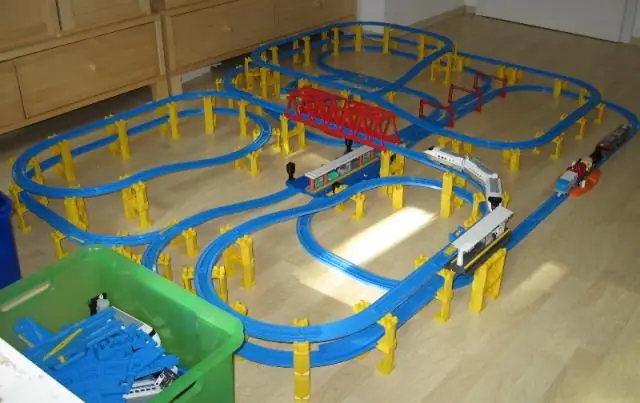
Table of contents:
- Choosing and installing a toilet with your own hands
- Toilet classification
- Recommendations for choosing a model
- Preparing for installation
- Assembling the toilet
- Sewer connection
- Water connection
- Features of connection of "monoblock" and "compact" models
- Suspended toilet: installation features
- System health check
- Typical errors and ways to eliminate them
- Author Bailey Albertson [email protected].
- Public 2023-12-17 12:53.
- Last modified 2025-06-01 07:32.
Choosing and installing a toilet with your own hands

If you need to replace an old one or install a new toilet, some people immediately rush to seek the help of a specialist. You should not make hasty decisions, because it is not difficult to do this work yourself. It is enough to study in detail the instructions for the purchased product, deal with the nuances of installation and do it yourself. Modern connecting elements allow you to quickly and efficiently connect the toilet to the sewer. Spending a little time, you will save significant money, because the cost of the work of an experienced plumber is almost equal to the cost of the purchased toilet.
Content
-
1 Classification of toilets
- 1.1 By method of attachment
- 1.2 By release design
- 1.3 By the type of tank attachment
- 1.4 By flush type
-
2 Recommendations for choosing a model
2.1 Video: choosing a toilet
-
3 Preparing for installation
- 3.1 Required tools and materials
- 3.2 Removing the old toilet
- 3.3 Surface preparation for installation
-
4 Assembling the toilet
4.1 How to connect the toilet to the cistern
-
5 Connection to sewerage
- 5.1 Installing a vertical toilet
- 5.2 Fitting a toilet with a horizontal spigot
- 5.3 Installing an oblique toilet
- 5.4 Conversion from cast iron pipes to plastic products
- 5.5 Connection with corrugation
- 5.6 Connecting the toilet with an adapter
- 5.7 Video: installing the toilet
-
6 Water connection
6.1 Video: connecting the toilet to the water supply
- 7 Features of connection of models "monoblock" and "compact"
-
8 Wall hung toilet: installation features
8.1 Video: installation of a wall-hung toilet
- 9 Checking system performance
-
10 Typical errors and how to eliminate them
10.1 Video: installation errors
Toilet classification
Many people think that the toilet is a modern invention, but it is not. Already at the end of the 16th century, it was invented for the Queen of England, but due to the lack of centralized water supply and sewerage, it was not widely used.
Modern toilets are available in different modifications and differ in the shape of the bowl, the installation method and the type of drainage system. To make the right choice of such a device, you first need to familiarize yourself with the existing proposal and decide on the parameters of the toilet that you need.
By mounting method
There is a classification of toilets according to the mounting method:
-
floor. They are the most budget-friendly and best suited for spacious washrooms. Installation of such a product is carried out on anchor bolts, which allows, if necessary, to dismantle it without damaging the floor covering;

Floor standing toilet Floor-standing models are mounted on anchor bolts and can be easily dismantled if necessary
-
wall-mounted. This is one of the varieties of the floor-standing version, designed for installation in small bathrooms. By the design of the flush system, such toilets are practically in no way inferior to suspended ones. There are corner wall units that are great for small washrooms;

Wall-mounted toilet The wall-mounted toilet differs from the floor-standing toilet only in that it is installed close to the wall
-
suspended. Also intended for installation in small rooms. 6533853: 15.06.2018, 20:52 The
connection lies in the fact that the models are graceful, therefore, they seem miniature and fragile, but they can withstand a serious weight - up to 400 kg
"> Although outwardly such models seem very graceful and fragile, they are designed for weight up 400 kg, therefore they are very durable and reliable. Installation of the suspended structure makes it easier to clean the bathroom, and also frees up some of the free space. This toilet is fixed in a frame or block way.

Wall hung toilet Wall hung toilet saves space
By release design
By the type of flushing water into the sewer system, there are toilets:
-
with vertical release. Such a solution is rare in our country, and, for example, in America it is very popular. This is due to the fact that in this country communications are often not attached to the wall, but carried out under the floor, so the toilet can be installed anywhere;

Toilet with vertical outlet A toilet with a vertical outlet can be installed in any desired place, for this it is enough to bring the sewer pipes there
-
with a horizontal outlet. The toilet flush and the sewer outlet are aligned. Most modern models have this design;

Toilet with horizontal outlet The toilet with a horizontal outlet is designed for cases where the drain is located in the wall
-
with oblique release. The angle of inclination of the toilet outlet is 40-45 °. Such models were popular in the 80s of the last century, they were installed in apartment buildings.

Oblique toilet Toilets with an oblique outlet are placed when the communications fit along the bottom of the wall
By the type of tank attachment
If we talk about the type of tank attachment, then the toilet bowls can be of the following types:
-
with a separate tank. In this case, the tank is fixed under the ceiling, and it is connected to the bowl using a pipeline. This allows a high flush speed to be obtained, but the appearance of such a structure is not very attractive;

Toilet with split cistern The tank is located at some distance from the toilet bowl and is connected to it by a pipeline
-
with a shared cistern that attaches directly to the toilet bowl. The design can be split, bolted or monolithic;

Toilet with joint cistern In most toilet models, the cistern is installed directly on the bowl
-
with hidden cistern. This solution allows you to implement a variety of design ideas. The hidden tank is fixed with a frame method;

Toilet with hidden cistern Only the bowl remains in sight, and the cistern is hidden inside the toilet
-
without a tank. Usually such models are installed in public toilets, but can also be used in everyday life. In this case, the pressure into the bowl is supplied directly from the water supply system, and the water flow is controlled using an electronic or mechanical valve.

Toilet without cistern In a toilet without a cistern, water is supplied to the bowl directly from the main
By flush type
There are differences between toilets and in the direction of flow of water when flushing:
- straight - water is supplied in one direction. The effectiveness of this method is worse than the circular one, because the water does not completely cover the bowl and is sprayed, but such toilets are more durable and cheaper;
- circular. In such models, the water moves in a circle, therefore, it completely covers the inner surface of the bowl;
-
non-standard. Water first fills the bowl, then drains sharply. The efficiency of such flushing is high, but the water consumption is also higher than usual.

Horizontal and circular flush The most common drain types are straight (horizontal) and circular.
Most modern toilet bowls have two flush modes - full and economical, which can almost halve water consumption
Recommendations for choosing a model
There is a wide selection of both domestic and foreign toilets on the modern market. Our models are cheaper as shipping and customs duties are not included. The main parameters that must be considered when choosing are:
- The quality of the bowl coating. In order for the toilet to be comfortable to use, it must have a good flush. And for this, the bowl must be covered with high-quality glaze - if it is porous, then the dirt will constantly accumulate and you will have to use the brush more often.
- Tank filling speed. The toilet bowl should have modern shut-off valves, then if several people live in the house, you will not have to wait long for the drain to be restored after visiting the toilet by other people.
-
The presence of an economical mode. Since now almost all apartments are equipped with water meters, in order to reduce its consumption, it is necessary to purchase models with a double button. In this case, it is possible to carry out a complete or economical drain.

Economy toilet button Economy drain mode uses half the water
- Bowl shape. It can be different: round, oval, squared, so if possible, it is better to sit on the toilet and practically appreciate its comfort.
-
Material type. Usually porcelain or faience is used for the manufacture of toilets. Porcelain products are of higher quality, but their price is higher. Outwardly, it is almost impossible to distinguish porcelain from faience, so it is imperative to study the product documentation. Now you can buy metal, glass models, toilet bowls made of reinforced plastic, natural or artificial stone.

Toilet bowl made of marble Toilet bowls are made not only from traditional porcelain and earthenware, but also from natural stone, such as marble
-
Cover quality. It should be rigid, made of duroplast and have an antibacterial coating. You shouldn't buy a foam lid, as it will be a breeding ground for germs. Convenient when the cover is equipped with a microlift. It ensures smooth closing without noise or shock.

Toilet lid It is best to purchase toilets with a duroplast lid with a built-in microlift
- Additional functions. Many manufacturers now equip their products with various options, but keep in mind that this increases the cost of the device. Before purchasing such a model, consider whether you need lights, music from the toilet or a heated seat.
When choosing a toilet, you need to optimally combine your desires and financial capabilities. You can either donate some points and choose a more budget model, or buy a device with additional capabilities.
Video: choosing a toilet
Preparing for installation
If you decide to install the toilet yourself, then before that you need to perform certain preparatory work. First you need to determine which model will be optimal in your case and only then purchase it.
Usually, the installation of the toilet is carried out during the repair in the bathroom. If there is a need to replace it in another case, then first you need to take out of the room objects that will interfere with the work, turn off the water supply and prepare all the necessary tools.
Required tools and materials
In order to install the toilet, you may need the following tools and materials:
- flexible or rigid hose for connecting to the water supply;
- corrugated or rigid pipe for connecting to the sewer;
- puncher;
- set of screwdrivers;
- keys set;
- pencil and tape measure;
- a hammer;
- chisel;
- a set of drills, spear drills;
- sealant, metallized tape, FUM tape, tow (for connecting to a cast iron sewage system);
-
cement mortar.

Toilet installation tools To install the toilet, you must first prepare all the tools and materials
Dismantling the old toilet
If you are replacing the toilet, you must first dismantle the old device. The work process will be as follows:
- Removing the tank. First you need to disconnect the water supply hose, then drain the water from it. Then open the lid, unscrew the fasteners and remove the tank.
-
Dismantling the toilet. Unscrew the fastening of the toilet bowl to the floor and disconnect it from the sewer pipe. If this does not work right away, you need to shake the bowl a little. For ease of use, you can first cut off the toilet (if it will no longer be used), and then proceed to dismantle the mountings.

Dismantling the old toilet First, remove the tank, and then dismantle the bowl
-
Cleaning the sewer hole. It is necessary to clean the entrance to the sewer hole, and then close it with a rag so that foreign objects do not get there, and toxic fumes do not penetrate into the apartment.

Cleaning the sewer hole The opening of the sewer pipe is cleaned of dirt and deposits
Surface preparation for installation
The choice of how to prepare the floor surface will depend on how the old toilet was installed. Previously, for mounting the toilet bowl in the floor, a board (taffeta) was sealed, after which the bowl was attached to it with screws. If the taffeta is in good condition, then it can be left. If you decide to remove the board, then the resulting place needs to be filled with mortar and covered with tiles.

The surface for installing the toilet must be cleaned and leveled
If the toilet was installed on a tile, it is enough to simply unscrew it, as the floor covering will not be damaged. After that, you can mark the places for installing a new toilet.
Assembling the toilet
To ensure the integrity of the plumbing equipment and save space during transportation to the store, it arrives disassembled. Do not be afraid of this, since each product comes with detailed assembly instructions, following which it will not be difficult to cope with this task.
How to connect a toilet bowl to a cistern
The main attention should be paid to the correct installation of the float, since it is he who regulates the filling of the tank with water. The process of assembling the toilet itself consists of the following steps:
-
Installation of the drain mechanism. The shut-off valves are usually already assembled, so you just have to install it in the tank. Pay particular attention to mating surfaces and watch for burrs. First, a sealing rubber is installed, then the drain device and fix it with a nut.

Tank drain mechanism The complete drainage mechanism is installed on a sealing rubber that protects the drainage point from leaking
-
Tank to shelf connection. The assembled cistern is applied to the shelf on the toilet bowl and connected using the bolts and nuts provided in the kit. Do not forget to install rubber washers to ensure tightness of the connection.

Installing the toilet cistern Rubber washer ensures a tight connection between the tank and bowl
During installation in the tank of the shut-off valves, all the nuts are tightened by hand, without applying great effort
Place the toilet in the place where it will stand and align with plastic or rubber gaskets. Then they mark the attachment points, make holes in the floor and fix the toilet with the dowels.
Sewer connection
After installing the toilet, you need to connect it to the sewage system. There are some peculiarities when connecting models with vertical, horizontal or oblique drain.
Installing a toilet bowl with vertical outlet
The connection to the sewerage of a toilet bowl with a vertical outlet is carried out simultaneously with its installation:
-
Fastening a special flange. First, a flange with a retainer is put on the sewer pipe.

Mounting flange fastening A flange is put on the pipe and fixed to the floor
-
Toilet bowl installation. Install the toilet so that all the holes coincide, and turn it a little. This allows the two elements to be hermetically connected. After installation, the fasteners are tightened.

Installation of a toilet with vertical flush They put the toilet on the flange and turn it a little
Installation of a toilet bowl with a horizontal pipe
In this case, the outlet is directed backwards and a special cuff is used to connect it to the sewer pipe. Its shape depends on the location of the outlet from the riser. If it is made horizontally, then a straight adapter pipe of the appropriate diameter is used. If the drain pipe comes out at an angle, make an appropriate design from swivel elbows or from a corrugated hose.

To connect a toilet bowl with a horizontal outlet to the sewage system, a transitional structure of swivel elbows or flexible corrugation is used
Installing a toilet bowl with an oblique outlet
Very often, the oblique outlet of the toilet is located above or below the sewer pipe. There are two ways to mount such models:
- The use of corrugation. A piece of corrugation is used for the connection, and to seal the seams, you can additionally lubricate them with a sealant, although an O-ring is usually sufficient.
-
Using a special pipe. In this case, an S-shaped pipe is used. Note that this method involves moving the toilet to the side. If the dimensions of the room do not allow the toilet to be displaced, then you can make a pedestal of the required height for it, and then connect it to the sewer.

Installation of a toilet bowl with an oblique outlet The easiest way to solve the problem of combining the outlet of the toilet bowl and the opening of the sewer pipe is using a flexible corrugation
Transition from cast iron pipes to plastic products
There are still cast-iron sewer pipes in the houses of the old building, and if they are in good condition, then they do not have to be changed, since you can make a connection with new plastic products.
There are several installation methods:
-
With a rubber gasket. This option is good to use if the cast iron bell has a smooth edge. The cuff is lubricated with a sealant and inserted into the socket, after which a plastic pipe or adapter is inserted into it. A plastic pipe is inserted into a cast iron pipe by 3-8 cm - if everything is done correctly, then such a connection will reliably serve for 6-8 years.

Transition with rubber cuff Sealing of plastic and cast iron pipes can be done with a rubber sleeve
-
With the use of linen winding. If no sealant is available, linen roll can be used. This is a time-tested method: a plastic pipe is wrapped with a linen winding, after which it is inserted into a cast-iron socket, and the winding with a narrow spatula is carefully tucked in. Then the seam is coated with a solution of PVA glue and dries throughout the day.

Connecting pipes with tow The gap between the plastic and cast-iron pipe is sealed with tow and poured with a solution
- Combined method. To obtain the most tight connection, when the gap between the pipes to be connected is large, a combined installation method is used. At the same time, the stamping is carried out with the help of a winding and a rubber gasket is installed, after which the joint is coated with silicone sealant.
-
With a press fitting. This is a special element that, on the one hand, has a thread for a cast iron pipe, and on the other, a socket for a plastic element. In this case, the edge of the old pipeline is cut off, after which it is lubricated with grease and the threads are cut. Then tow tow or FUM tape is wound, lubricated with a sealant and a press fitting is screwed on. A plastic pipe is inserted into the socket.

Press fitting With the help of a press fitting, you can reliably connect a plastic pipe with a cast iron
When doing the joining of the cast-iron and plastic sewer system, it is important to follow the specified rules for performing work, this is the only way to obtain a high-quality and tight connection
Corrugated connection
One of the most common ways to connect a toilet bowl to a sewer is to use a plastic corrugation. First you need to decide on the required size of this product. It is best to buy corrugation reinforced with wire or mesh - it is more durable and will last longer.
The procedure for connecting the toilet:
- Completely get rid of the old seal if its traces remain on the sewer outlet.
- Apply a layer of sealant to the outer part of the outlet, then put the thick edge of the corrugation on it - it should go into the outlet by at least 5 cm.
- Insert the rubber seal into the drain hole until it stops, lubricate its inner part with sealant and start the corrugation.
-
Check the quality of the connection - if there are no water leaks after draining, then everything was done correctly.

Connecting a toilet with a corrugation Plastic corrugation is convenient in that it can be given any shape and size
Connecting the toilet using an adapter
You can make the connection using plastic elbows, but unlike corrugations, they are not flexible. This solution is convenient to use when the sewer system was planned for a specific toilet model.
Rigid bends are stronger and more durable, but when you replace the toilet or need to move it a little, you will have to change adapters or use a corrugation or eccentric.

To connect the toilet to the sewer, you can use a straight adapter or an element with an eccentric
Installation is carried out in the same way as in the case of corrugation, but horizontally located adapters and right angles must be avoided. Gray adapters are cheaper, but they look ugly with a white toilet.
Video: installing a toilet
Water connection
There are several ways to connect the toilet cistern to the water supply:
- lower eyeliner - such models work silently;
-
side connection - although there is noise during the intake of water, the connection is simple and quick.

Bottom and side water supply for the toilet The water supply can be connected to the tank from the bottom or from the side
To connect to the water supply can be used:
-
flexible hose;

Flexible toilet connection Flexible hose provides water supply from the water supply system to the tank along the route with any configuration
-
hard eyeliner. This option is used for tanks hidden in the wall, since the service life of the flexible hose is relatively short.

Hard liner to the toilet Rigid hose lasts longer than flexible hoses, but to use it, you need to clearly calculate the configuration of the supply line
The connection procedure will be the same regardless of the connection:
- A tap is installed on the water pipe, which, if necessary, will allow you to shut off the water supply to the toilet.
-
One end of the hose is connected to the pipe, and the other to the drain tank, while it is imperative to use rubber gaskets.

Connecting the water supply to the toilet At the outlet from the water supply, it is imperative to install a tap so that, if necessary, you can turn off the water supply to the toilet
- Check the tightness of the connection.
Video: connecting the toilet to the water supply
Features of connection of "monoblock" and "compact" models
The difference between "compact" and "monoblock" toilets lies in the type of connection of the cistern. If in the first case the tank is attached directly to the shelf located on the bowl, then in the second case the bowl and the tank are made in a single body.

In the "monoblock" toilet bowl and cistern are made in a single body
Both types of toilets are floor-mounted, and the way they are connected to the sewer will depend on the type of flush. Installation is carried out in the same way as shown above. The only difference is that for the "compact" it is necessary to independently install and adjust the shut-off valves, while for the "monoblock" it is already assembled and adjusted by the manufacturer.
Suspended toilet: installation features
If the area of the toilet is small and you want to save free space, experts recommend installing a wall-mounted toilet model. The installation of such a device is carried out on an installation - a special support frame.
The technology for mounting a wall-hung toilet includes the following steps:
-
Installation selection. It is usually supplied with a cistern, a flush button, and the necessary fittings and adapters. The bowl can also be included or you have to buy it separately.

Installation The installation usually includes a tank, adapters and nozzles
- Determination of the seat height. Installation of the installation is possible only on a solid wall, which can withstand a weight of about 400 kg, therefore it cannot be installed on a plasterboard structure. The toilet seat is usually installed at a height of 40-48 cm, it all depends on the height of the users - you need to make it so that everyone is comfortable.
-
Markup. The central axis of the installation is marked and its distance from the adjacent wall is determined. It should provide a convenient connection of water supply and sewerage, therefore it is usually at least 14 cm. The tank is placed at a height of 1 meter from the floor.

Layout for installing a wall-hung toilet The height of the hanging toilet bowl above the floor level should be 40-48 cm
- Drilling holes. Holes are made in the marked places into which the dowels are inserted.
-
Installation of the installation body with a plastic cistern. It must be set in a vertical and horizontal plane, therefore, a building level must be used. The adjustment is performed by changing the height of the legs.

Installation installation With the help of adjustable feet, the installation is level
- Installing the drain button. It can be mechanical or pneumatic.
- Lining up communications. The water supply is usually carried out using rigid pipes, since they are more durable and reliable. The pipes of the tank are fixed with clamps and the sewer outlet is mounted at an angle of 45 o.
-
Installing the bowl. It is attached to the studs using a shock-absorbing pad. Connect the bowl and tank nozzles. Check the work of the toilet.

Mounting the bowl The bowl is securely fixed to the main structure with studs
-
External finishing. For this, moisture-resistant drywall is most often used, but other material is also possible.

External finishing of the structure for installation The structure of the installation is most often finished with moisture-resistant plasterboard
Video: installation of a wall-hung toilet
System health check
Regardless of what type of toilet you have installed, before you start using it, you need to check the functionality of the system. This is not difficult to do: you need to turn on the water and wait until the tank is filled. After that, the water is drained and all the joints of the toilet bowl with the water supply and sewerage system are inspected.
If there are no leaks, then everything is fine. If leaks were found in some connections, it is necessary to check and correct the seals and again perform a control drain of the water. It is also necessary to check the reliability of fixing the toilet, it must be fixed firmly.
Typical errors and ways to eliminate them
When doing self-assembly of the toilet, home craftsmen can make typical mistakes, which can also be eliminated with your own hands:
- non-observance of the rule of height difference - when moving the toilet, the angle between it and the sewer system should be 15 o or 3-5% of the offset distance. For example, when moving a toilet bowl 2 m, it must be raised to a height of 6-10 cm;
- lack of "revision". On the sewer riser, it is imperative to provide for a technological window through which the system is cleaned. It must be freely accessible;
- violation of the order of work. The installation of the toilet bowl must be carried out at the very end of the repair, so as not to damage it during finishing;
-
incorrect installation of the bidet. The toilet and bidet should be located side by side, while their bowls should be on the same horizontal line;

Toilet and bidet installation The toilet and bidet must be installed on the same horizontal line
- incorrect seat selection. It may not coincide with the edges of the bowl, then there is a risk of damage to the enamel on the toilet and breakage of the seat itself;
- incorrect installation of valves. If water is constantly flowing out of the tank or overflowing, this indicates damage to the drain or filling valve;
- water leak. This malfunction is associated with poor tightness of the joints, they are eliminated by installing new seals;
- the appearance of an unpleasant odor. Usually this problem indicates a violation of the tightness of the connection between the toilet and the sewer.
If you loosely secured the toilet, then this can soon lead to a leakage of the joints, as well as to its damage
Video: installation errors
Almost any home craftsman can install a toilet on his own. To do this, you need to choose the right type of toilet and, in accordance with this, carry out its installation. If you strictly follow the instructions and recommendations of specialists, then a toilet bowl installed with your own hands will perform the necessary functions for a long time and reliably.
Recommended:
How To Install Fence Posts With Your Own Hands, Including Without Concreting, At The Correct Distance And Depth - Instructions With Photos And Videos
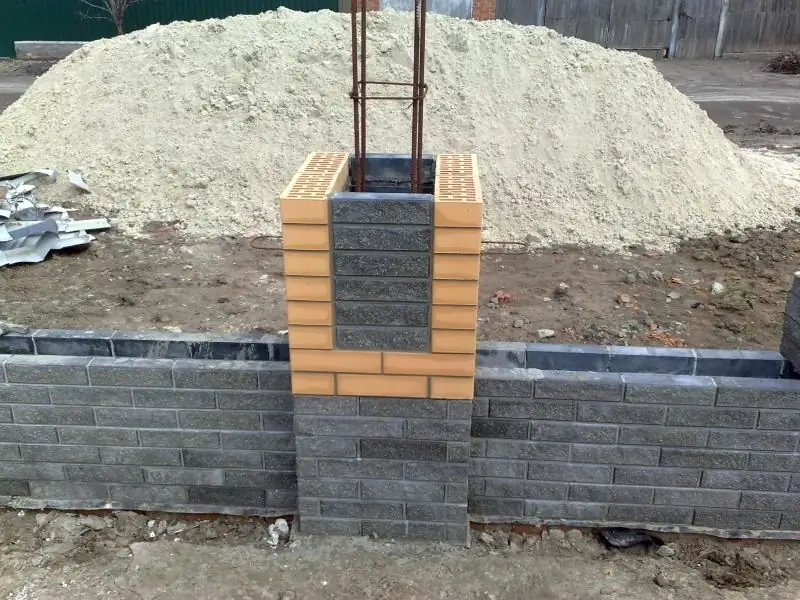
How to install fence posts: installation methods, use of suitable materials
How To Choose And Build A Foundation For A Bath With Your Own Hands - 4x6, 3x4 And Other Sizes, Tips, Instructions, Photos And Videos
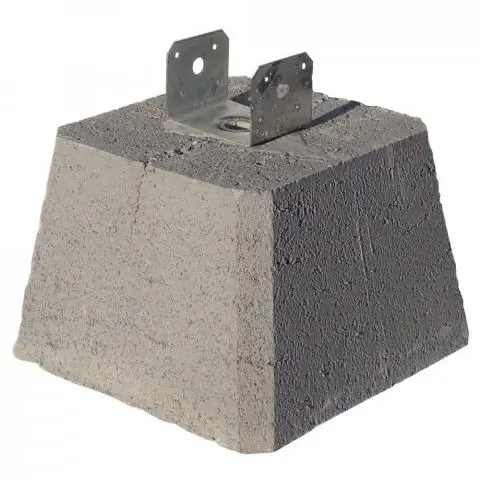
How to make a foundation for a bath with your own hands. Types and features of foundations. The choice of materials and technology, installation rules and step-by-step instructions
Installing A Boiler (water Heater) With Your Own Hands: Connection Diagram To The Water Supply System, Rules, Etc
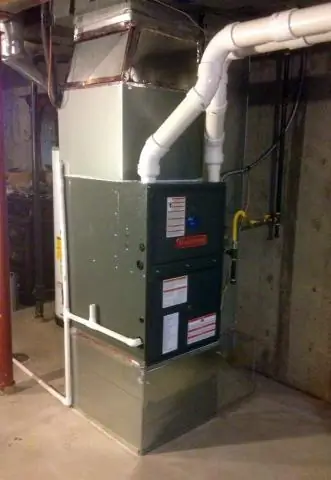
What is a boiler, how does it work. How to independently install and connect an instantaneous and storage water heater. Safety regulations
Installing A Sink In The Bathroom: How To Properly Install A Washbasin With Your Own Hands, At What Height To Fix And Other Installation Features
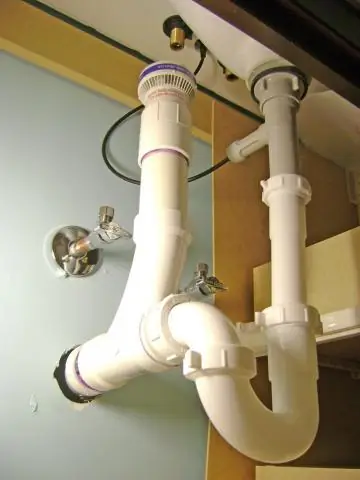
Types of bathroom sinks. The sequence of installation, connection to water supply and sewerage, performance check. Errors and methods of their elimination
Installing An Outlet And Connecting The Outlet To The Network With Your Own Hands
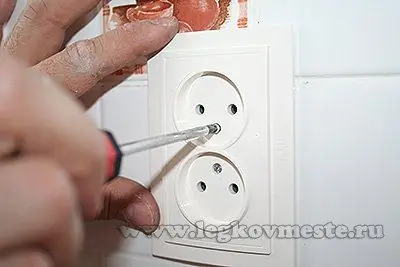
Installing the outlet - step-by-step instructions with photos of how to install the outlet with your own hands. Connecting sockets internal and external to the voltage network
